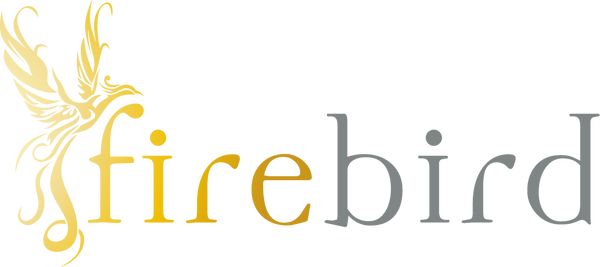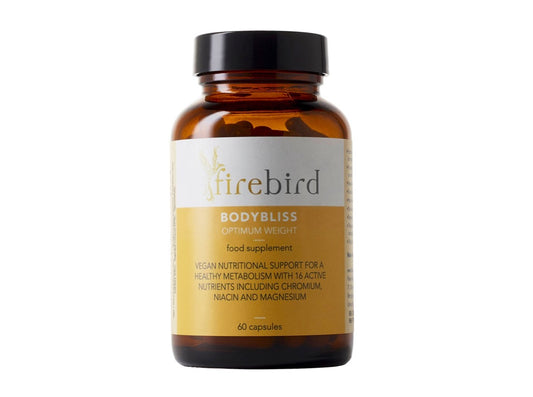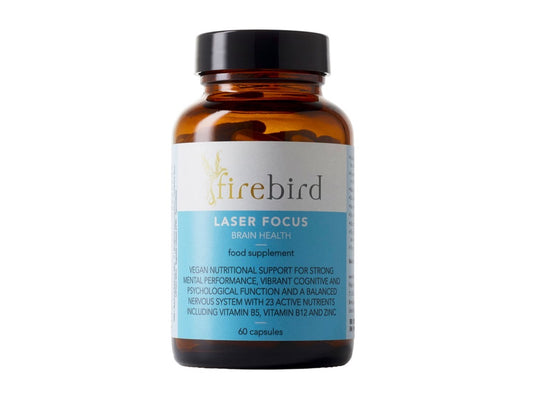
How to Strengthen Your Immune System before Winter
Today we asked our chief scientist what the most important habits are to build immune resilience. She gave us her 5 big tips. Read on to find out how to best support your immune system.
1. Sleep – consistent sleep strengthens the immune system. Lack of sleep or poor sleep throws the immune system out of balance, reducing natural killer (NK) cell activity and increasing inflammatory cytokine levels. If you suffer from poor sleep, we highly recommend putting some sleep hygiene measures in place, such as reducing or eliminating blue light exposure in the evening, finishing your last meal a few hours before bedtime, taking time to relax/wind down and clear your head before bedtime and making your bedroom a tech-free zone.
2. Gut Health – gut health and immune health are intrinsically linked, so keeping your gut healthy is essential for optimum immune health. The lining of your digestive tract, also known as your gut barrier, is designed to absorb nutrients while keeping out pathogens; as such, it is one of the first lines of defence against disease. Keeping the gut barrier strong and healthy, depends upon limiting the main offenders, which include antibiotics, pesticides and over-processed foods. Our scientist, therefore, recommends a diet rich in organic vegetables and grains.
3. Stress – many of us live with long-term, chronic levels of stress, which play havoc with our innate and adaptive immune responses, rendering us far more susceptible to disease. We all need to find enjoyable ways to balance our stress with equal amounts of fun, laughter and relaxation. This means different things to different people, so we all need to find those things that personally really help us release our daily stresses. Our suggestions would include walking in nature, yoga, meditation, naps, massage, painting, dancing, meeting up with friends and family, journaling and cooking.
4. Sugar – high consumption of sugar weakens the immune system. In particular, it seems to put our natural killer cells in a trance – not what we want when there’s a virus about. So, how much is too much? Studies concur that it takes about 75g of sugar (the equivalent of 15 teaspoons) to lower our immune response for up to 5 hours. With that information, we are going to time our treats carefully.
5. Nutrition – it can be difficult to sustain consistently therapeutic levels of nutrients through diet alone. So, a high quality supplement geared towards supporting our immune system like FIREBIRD®’s IMMUNE SHIELD, is a meaningful addition to our wellness toolkit.
Read on to find out about the 19 most important nutrients to support your strongest immune health. In the last year, the mainstream media have finally stopped maligning supplements and have, at first begrudgingly and then enthusiastically, started to uphold the place that supplements have in supplementing the nutrient levels of our modern diet.
The occasion was the new onslaught on our immune system in the form of COVID-19 or SARS-CoV2. New data started to emerge revealing that a patient’s level of Vitamin D contributed significantly to the outcome of the disease. Low serum levels of Vitamin D were associated with a significantly higher risk of COVID-19 infection. Then it was Vitamin C’s turn: its antiviral, anti-oxidant, anti-inflammatory and immune-modulatory effects were called upon as a therapeutic option in the management of COVID-19. Zinc followed close behind with its direct antiviral properties; patients with adequate zinc levels had significantly fewer complications and shorter hospital stays.
At a time when the science around the virus itself and vaccine development was on new, uncharted territory, there was an uncharacteristic unanimity in the value of supporting the immune system with supplemental nutrition.
So, which nutrients are most important for a strong immune system?
We’ve covered Vitamins C and D and Zinc, but there are many others. At FIREBIRD®, we have formulated the most comprehensive support for your immune system in our new product, IMMUNE SHIELD. We all want an immune system that is strong, impenetrable, intelligent and ever-vigilant. It takes a combination of nutrients to ensure the best response.
IMMUNE SHIELD contains therapeutic levels of Vitamins C and D and Zinc, as well as 16 further nutrients to give your immune system the strongest support ever. Here is a quick round-up of its ingredients:
Vitamin A helps maintain the healthy structural integrity of our mucous linings, which fight off infectious agents and environmental pollutants. Vitamin A also supports the epithelial tissues that protect the linings of the lungs, nose, throat, stomach, intestines, vagina, bladder and urinary tract. Vitamin A, therefore, protects tissues from infection and promotes rapid recovery through its support of healthy skin and mucous lining barriers, as well as through its ability to improve immune resilience, by boosting antibody response and white blood cell function.
Vitamin E enhances immunity, assists with healing and minimises the risk of clotting. It significantly assists in the repair of skin lesions, ulcers, burns, abrasions and dry skin, and diminishes the scars caused from injury or surgery.
B vitamins, B6, Folate and B12 and critical minerals, Copper, Zinc and Selenium, are all vital for a healthy immune system.
Quercetin is a plant compound with potent antioxidant and anti-inflammatory properties. It has been used traditionally as an allergy remedy, to boost immunity and to maintain overall health.
Astragalus is a potent herb known as a longevity remedy in Chinese healing traditions for centuries. It is prized for its immune-boosting, anti-ageing and anti-inflammatory properties. It is also used to combat fatigue and other common ailments.
Reishi Mushroom is a staple remedy in Eastern medicine. This fungus is prized for its content of triterpenoids, polysaccharides and peptidoglycans, which are credited for its immune system support and ability to reduce fatigue.
Beta-glucans are found in foods like oats and barley. This soluble, fermentable fibre is associated with protection against metabolic syndrome, cardiovascular issues and obesity. It has been studied for its capacity to stimulate immune function, in particular in the activation of monocytes/macrophages and increased production of immunoglobulin, NK cells and killer T‐cells.
Propolis has been used for thousands of years for its health-promoting properties. Propolis is produced by bees from tree sap and is extremely rich in antioxidant polyphenols. Propolis has been studied for its antibacterial, antiviral, antifungal, and anti-inflammatory properties.
Elderberry is rich in antioxidants and has also been studied for its antimicrobial and antiviral activity against infections of the upper respiratory tract, such as the common cold and the influenza virus. Traditionally, it was used by indigenous cultures to treat fever, infections, sciatica and rheumatism.
Cordyceps is another medicinal mushroom, which has been used in Traditional Chinese Medicine for centuries to treat fatigue and illness. Cordyceps has more recently been studied for its energy-boosting, anti-ageing, anti-tumour, antioxidant, anti-inflammatory and immuno-potentiating properties.
Glutamine is an important amino acid (a building block of protein) with many functions in the body. In particular, it plays a critical role in immune system and intestinal health. It has been studied for its ability to improve recovery after intense exercise, injury or illness.
Astaxanthin is a carotenoid pigment that gives fish, such as salmon and trout, their pinkish colour. Rich in antioxidants, astaxanthin has been studied for its many health benefits from healthier skin, endurance, heart health, to joint pain and cancer treatment.
Our IMMUNE SHIELD has been formulated to build the strongest immune defence possible, supporting all immune pathways.
Learn more:
How to Optimise Your Immune Health
All the nutrients you need to fast-track healing and recovery
What makes Magnessence such a powerful support for optimum health?
To supplement or not to supplement...
References
https://www.ncbi.nlm.nih.gov/pmc/articles/PMC7973108/
https://pubmed.ncbi.nlm.nih.gov/33401034/
https://pubmed.ncbi.nlm.nih.gov/32700398/
https://pubmed.ncbi.nlm.nih.gov/33232783/
https://www.ncbi.nlm.nih.gov/pmc/articles/PMC8052476/
https://www.frontiersin.org/articles/10.3389/fmed.2020.559811/full
https://scielo.isciii.es/pdf/ars/v61n2/2340-9894-ars-61-02-145.pdf
https://www.ncbi.nlm.nih.gov/pmc/articles/PMC7365891/
https://www.sciencedirect.com/science/article/pii/S120197122030730X
https://link.springer.com/article/10.1007/s43032-020-00400-6
https://onlinelibrary.wiley.com/doi/10.1002/jmv.26932
https://pubmed.ncbi.nlm.nih.gov/16230843/
https://pubmed.ncbi.nlm.nih.gov/20574926/
https://pubmed.ncbi.nlm.nih.gov/12916709/
https://pubmed.ncbi.nlm.nih.gov/25571788/
https://pubmed.ncbi.nlm.nih.gov/16428086/
https://pubmed.ncbi.nlm.nih.gov/18048435/
https://pubmed.ncbi.nlm.nih.gov/14713328/
https://pubmed.ncbi.nlm.nih.gov/20518254/
https://pubmed.ncbi.nlm.nih.gov/22203880/
https://pubmed.ncbi.nlm.nih.gov/22179947/
https://pubmed.ncbi.nlm.nih.gov/26988443/
https://pubmed.ncbi.nlm.nih.gov/22707327/
https://www.hindawi.com/journals/ecam/2014/280120/
https://pubmed.ncbi.nlm.nih.gov/31398785/
https://pubmed.ncbi.nlm.nih.gov/26314315/
https://pubmed.ncbi.nlm.nih.gov/32079214/
https://pubmed.ncbi.nlm.nih.gov/21352539/
https://pubmed.ncbi.nlm.nih.gov/27023596/
https://pubmed.ncbi.nlm.nih.gov/30670267/
https://www.ema.europa.eu/en/documents/herbal-report/final-assessment-report-sambucus-nigra-l-fructus_en.pdf
https://www.sciencedirect.com/science/article/pii/S1756464614002400
https://pubmed.ncbi.nlm.nih.gov/22129334/
https://pubmed.ncbi.nlm.nih.gov/28198157/
https://www.ncbi.nlm.nih.gov/pmc/articles/PMC4848651/
https://pubmed.ncbi.nlm.nih.gov/15080016/
https://pubmed.ncbi.nlm.nih.gov/28094746/
https://www.ncbi.nlm.nih.gov/pmc/articles/PMC5236007/
https://pubmed.ncbi.nlm.nih.gov/18803231/
https://pubmed.ncbi.nlm.nih.gov/21061463/
https://pubmed.ncbi.nlm.nih.gov/22536281/
https://www.ncbi.nlm.nih.gov/pmc/articles/PMC4564082/
https://pubmed.ncbi.nlm.nih.gov/26263965/
https://pubmed.ncbi.nlm.nih.gov/26141646/
https://pubmed.ncbi.nlm.nih.gov/26115996/
https://pubmed.ncbi.nlm.nih.gov/16354395/
https://pubmed.ncbi.nlm.nih.gov/2206772/
https://pubmed.ncbi.nlm.nih.gov/16423520/
https://pubmed.ncbi.nlm.nih.gov/10230862/
https://www.ncbi.nlm.nih.gov/pmc/articles/PMC4814030/
https://pubmed.ncbi.nlm.nih.gov/22028151/
https://pubmed.ncbi.nlm.nih.gov/23313017/
https://pubmed.ncbi.nlm.nih.gov/26283217/
https://pubmed.ncbi.nlm.nih.gov/10582122/
https://pubmed.ncbi.nlm.nih.gov/19382426/
https://pubmed.ncbi.nlm.nih.gov/9178278/
https://pubmed.ncbi.nlm.nih.gov/23351361/
https://pubmed.ncbi.nlm.nih.gov/24965526/
https://pubmed.ncbi.nlm.nih.gov/11822473/
https://pubmed.ncbi.nlm.nih.gov/25811544/
https://pubmed.ncbi.nlm.nih.gov/16211266/
http://www.actabp.pl/pdf/1_2012/43.pdf
https://pubmed.ncbi.nlm.nih.gov/16595899/








